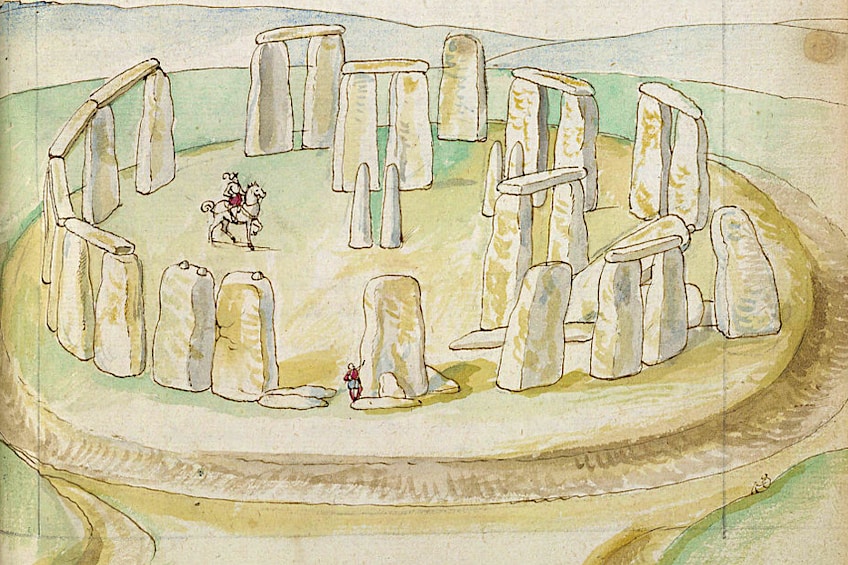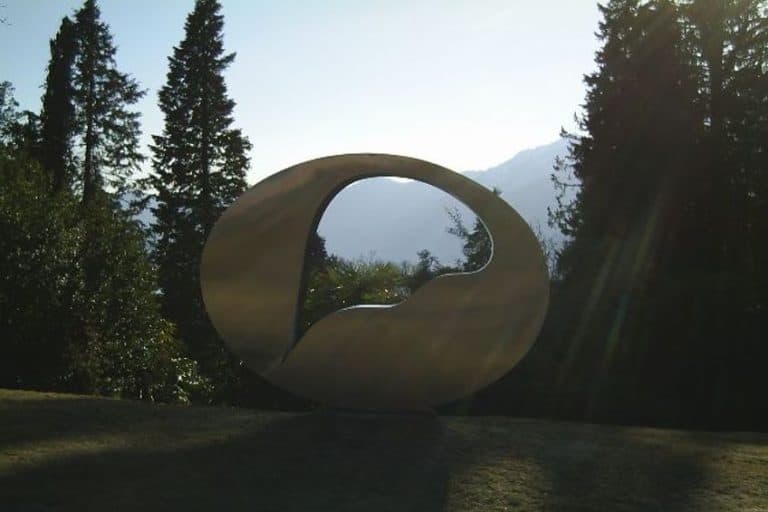Facts About Stonehenge – The Archaeology of Salisbury Plain
Stonehenge may be regarded as among the most well-known monuments in the world, but what is Stonehenge? Why is Stonehenge famous in the first place? We shall explore Stonehenge’s history as well as all the important facts about Stonehenge to help answer these questions.
Exploring the Stonehenge Facts
Every year, more than one million visitors come to experience this ancient structure in Wiltshire, England. Even Charles Darwin once paid a visit to this mysterious and captivating monument in the 1880s. One can only guess how many people have witnessed Stonehenge since its creation. During what time period was Stonehenge built, though, and why is Stonehenge a mystery? Before we get to the Stonehenge fun facts, let us find out more about Stonehenge’s history.

Stonehenge’s History
The fact that Stonehenge is still around for us to admire in the present day is a rather impressive feat itself! Especially considering that it was built around 4,500 years ago.
Around 3,000 BCE, work began on the site to construct an externally-ditched circular earthwork enclosure. It would be used as a kind of communal cemetery to contain the remains of the cremated as well as stone and timber uprights, and bluestones transported from Wales.
Some time five centuries later, trilithons made of sandstone were placed in a horseshoe-shaped arrangement, which was surrounded by another circle comprised of sarsens, all of which had been connected by lintels. A double circle made of the bluestones that were already on the site was placed between the larger sarsens. It is possible that several more stones were arranged during this period, such as the sarsens which were placed in the surrounding earthwork’s inner edge, and stones that were rearranged at the enclosure’s northeastern entrance. Approximately 200 years later, the third phase of alterations included the Avenue’s construction, reorganizing of the stones at the entrance, and reshaping the primary ditch of the enclosure.
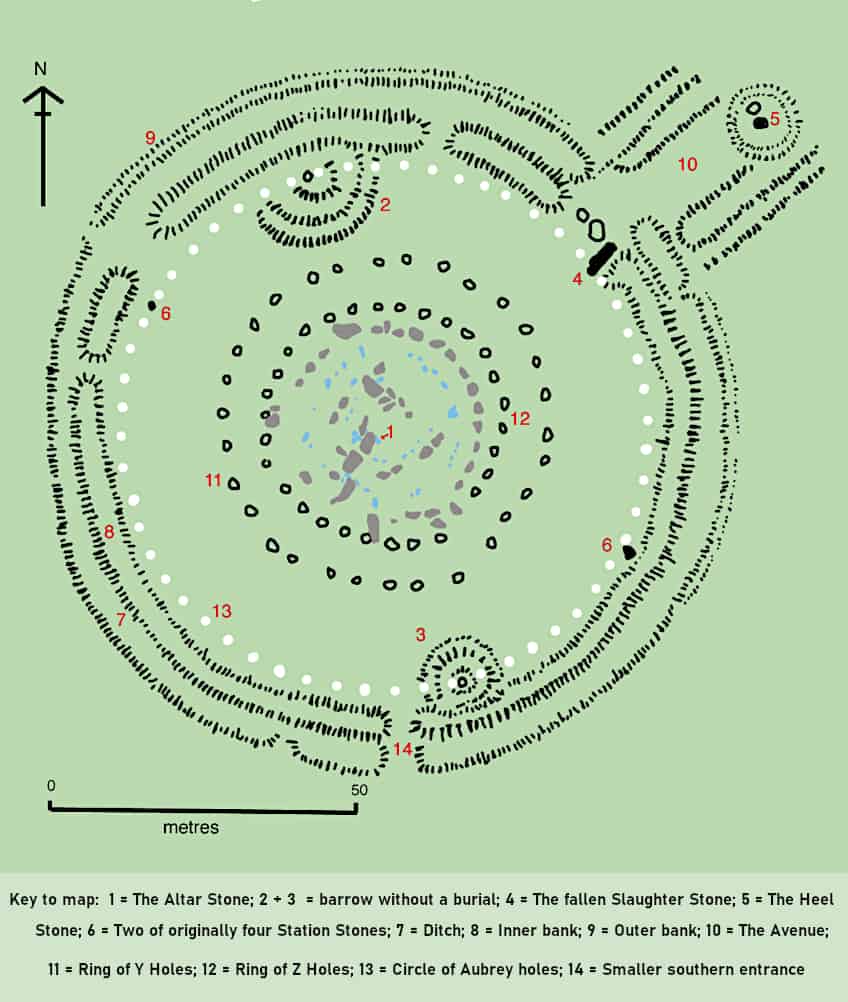
The circles comprising the bluestones were disassembled and reassembled as two ovals. The site had been rearranged many times by 1800 BCE, with carvings etched into the rocks and large pieces broken off and removed.
Dangerous Excavations
Throughout history, there have been many attempts to determine the exact date of Stonehenge’s creation, starting with the Duke of Buckingham who first tackled the issue during an excavation commissioned by him in the 1620s. The excavation, however, did not reveal much, and all they managed to uncover were old pieces of rusted armor and animal horns uncovered from two large pits. All these excavations were not ideal for the site, however, and it is believed that the stones became even more unstable due to excavations that took place in the 19th century.
All these interventions eventually led to the collapse of a circle of sarsens and a lintel on New Year’s Eve in 1900. This raised safety concerns which led to further excavations in an effort to straighten the stones.
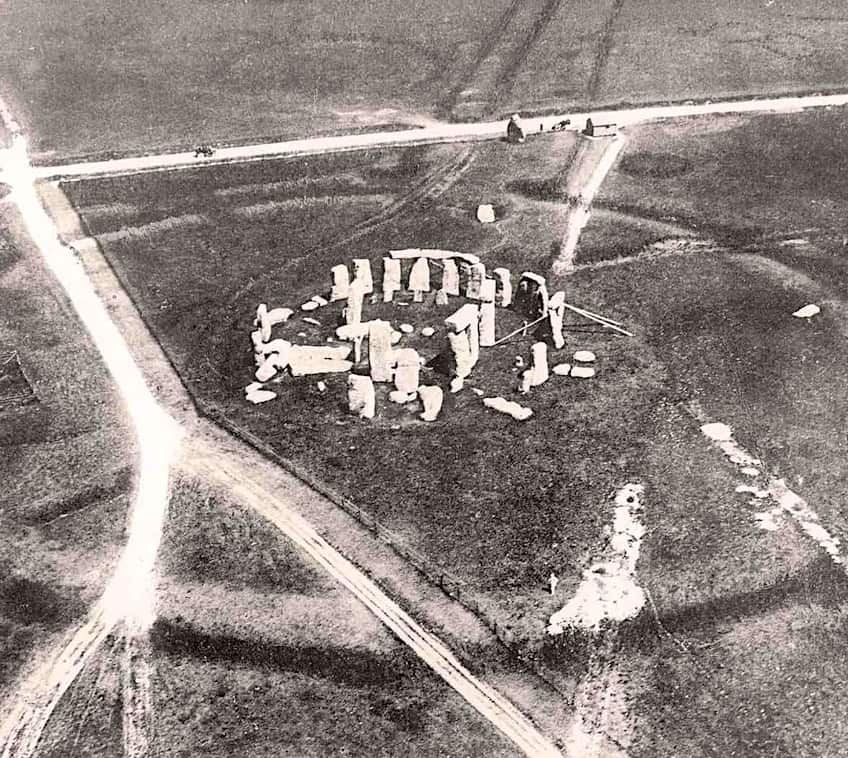
From the 1950s to the mid-1960s, further excavation campaigns were implemented to repair and re-erect many of the stones. While the longevity of the structure was significantly extended by these projects, it would not be until 1995 that the results were released to the public. Further excavations in 2008 revealed that the monument was regularly utilized during the later Roman era. It was also discovered that women, children, and men were all buried at the site between 3000 and 2500 BCE.
Subsequent data published in 2018 has also revealed that many of the people who were buried there were not locals, but were possibly brought there from northern Scotland, Ireland, and western Wales.
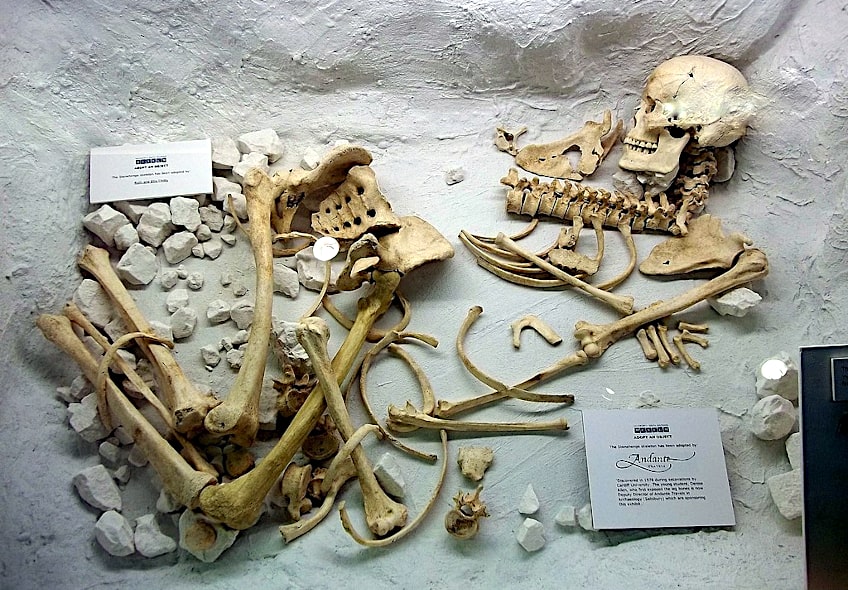
Facts About Stonehenge
How Big is Stonehenge and what was it used for? There are many questions we have not yet answered. Our brief introduction to Stonehenge’s history was merely a starter, now it’s time to dig into the main meal – facts about Stonehenge. These Stonehenge facts will provide greater detail into the past and the use of this incredible site.
- Stonehenge is not actually a henge. Britain famously has many henges, however, Stonehenge is not really one of them. While true henges feature an internal ditch within a raised earthwork, Stonehenge comprises a ditch that is located outside of the earthwork. If you want to see a real henge, there is a popular one a few miles north of Stonehenge called Avebury.
- It is still a mystery how the stones were transported to the site. We still haven’t quite figured out how these massive stones were moved all the way from Wales. There are even theories that many of the stones belonged to a similar stone circle in Wales before being moved to their current location. Considering that each stone could weigh more than the equivalent of four elephants, it was no small feat! Some people have theorized that the stones were possibly dragged using sleighs and then carried over water by rafts. This transport theory has yet to be proven, though.
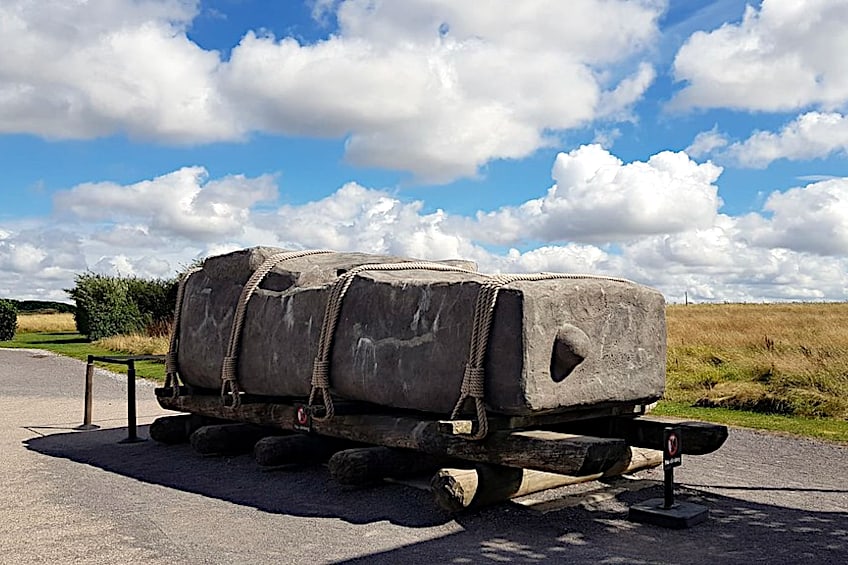
- The construction of Stonehenge coincided with a period of great change. At the time of the building of Stonehenge, metalworking knowledge, Beaker pottery, and certain burial rituals were being brought over from Europe. Beaker graves from around 2400 BCE have been unearthed near the site.
- Astronomers find Stonehenge fascinating. Many astronomers have analyzed the site to try to gain a better understanding of Stonehenge. For example, Dr. Halley tried to work out the site’s age using the position of the rising sun on the horizon and magnetic deviation. Another astronomer, John Smith, noted that if one multiplied the number of astrological signs by the number of stones at Stonehenge, then the result would be the number of days in the year. Other astronomers believe that the site marks certain annual events such as the equinoxes and solstices. For instance, on the morning of the summer solstice, the sun can be observed rising over the Heelstone. They also point out certain lunar alignments, which were used to determine certain cycles related to ceremony and agriculture.
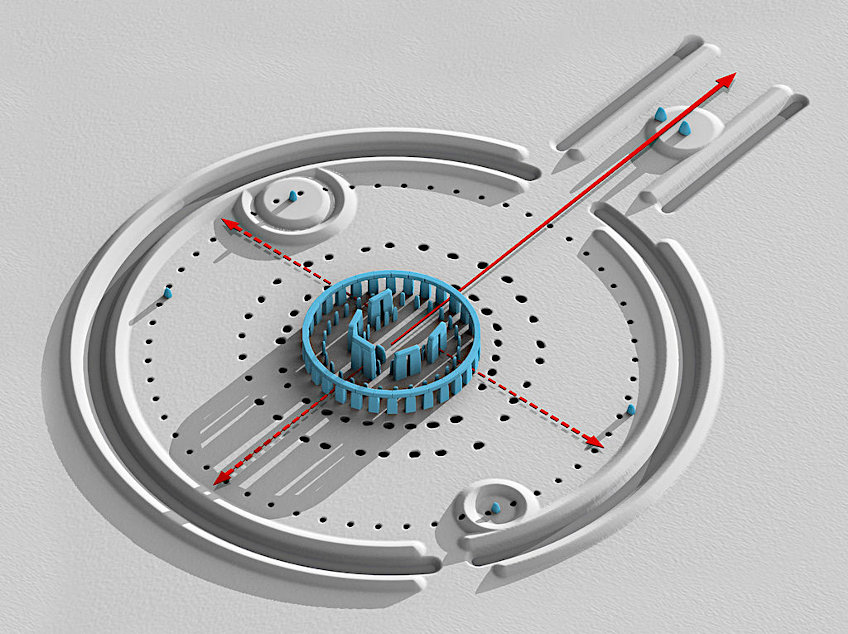
- The Romans once occupied the site. During excavation carried out at various periods at the site, Roman coins, metal objects, and pottery have been unearthed. This reveals that the site was only sporadically used during the centuries, as significantly fewer artifacts from the Middle Ages have been discovered.
- Darwin carried out excavations at Stonehenge. He was also one of the first to do so. However, his interest was not in the stones themselves, but rather in the earthworms that resided there. He was interested in learning how their burrowing activity could lead to objects on the surface eventually ending up at lower levels due to the constant creation of underground tunnels, and subsequent sinking of the upper level. This was actually useful information to archeologists as it meant that certain objects that were found at lower levels would have been presumed to come from earlier ages, whereas they were potentially less aged objects that had simply sunk.
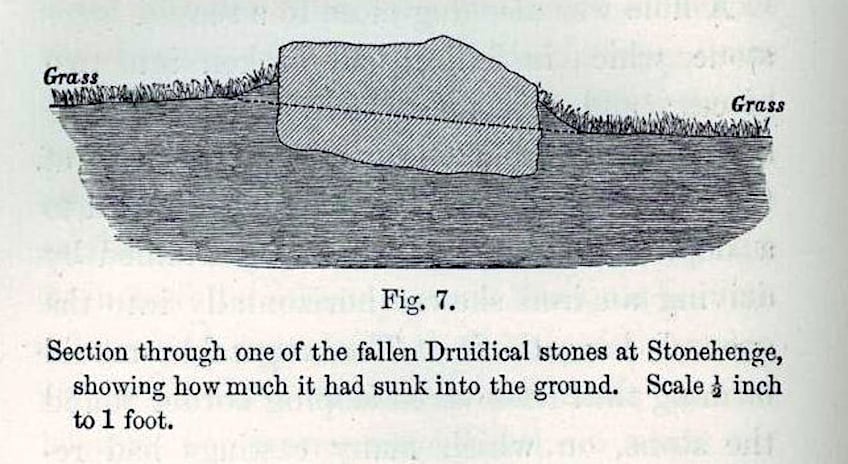
- Practically every stone has been straightened or re-erected. Although we may regard Stonehenge with a certain amount of awe considering how long it has existed in the same spot, the truth is that it has been significantly restored over the years. A stone that was leaning was placed in concrete and set straight as far back as 1901. A further six stones were re-erected in the 1920s by the Stonehenge Society. From 1958 to 1964, several more stones were moved and re-erected. Due to the continuous movement of stones through the ages, it is almost impossible to determine how close to the original layout the stones are placed in today.
- The Construction of Stonehenge is said to be attributed to King Arthur’s mage. Well, at least in an old myth, that is. According to this myth, Merlin directed a giant to carry the stones from Preseli Hills in Wales to its current location. All of the giant’s strength was required to move the stones, and according to the legend, he passed away from pure exhaustion once he had finally completed the task. Merlin then used his magical powers to levitate the huge stones and place them into position.
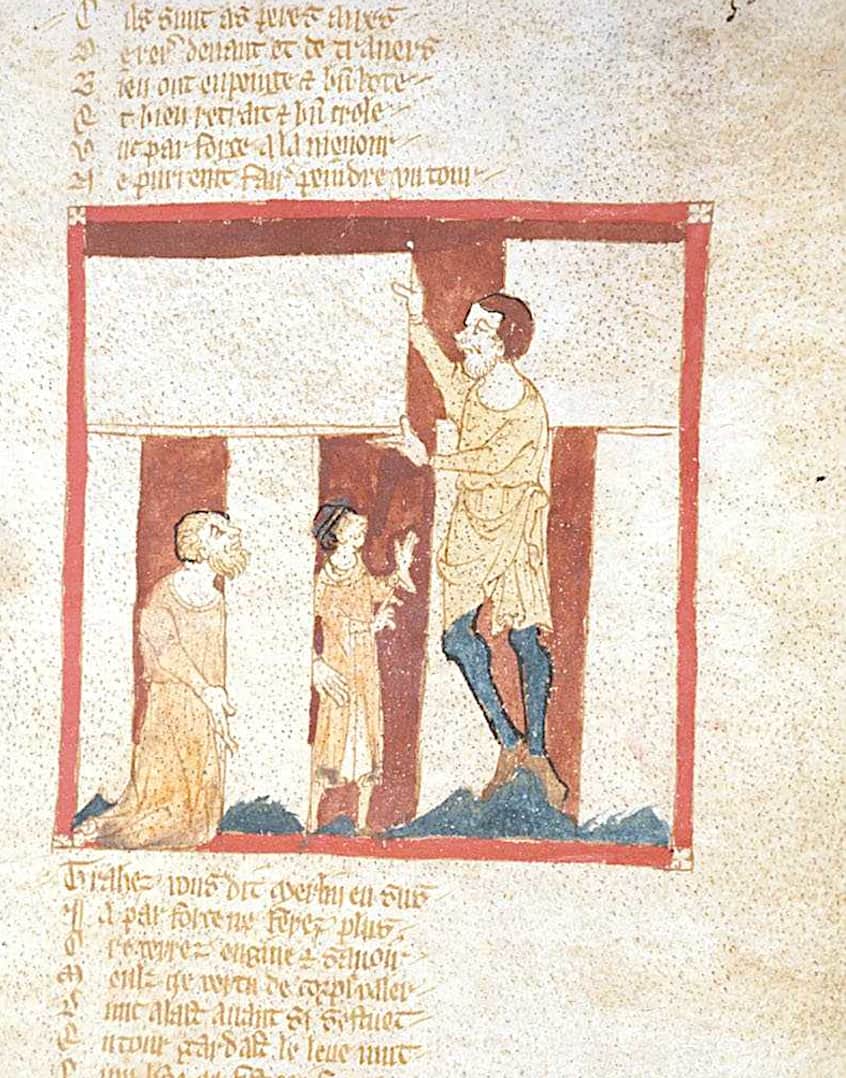
- The rocks at Stonehenge are “Ringing Rocks”. This is due to the fact that, if struck, they emit a bell-like ringing sound. It is believed that this is due to the high level of quartz within the sarsen. Quartz is a type of crystal that is similarly known for its acoustic qualities when struck.
- The earliest known realistic representation of Stonehenge was done by Lucas de Heere. It was produced on site using watercolors in a sketchbook between 1573 and 1575 and reflects this Flemish author and artist’s project of creating an accurate record of the ethnography, geography, and history of England.
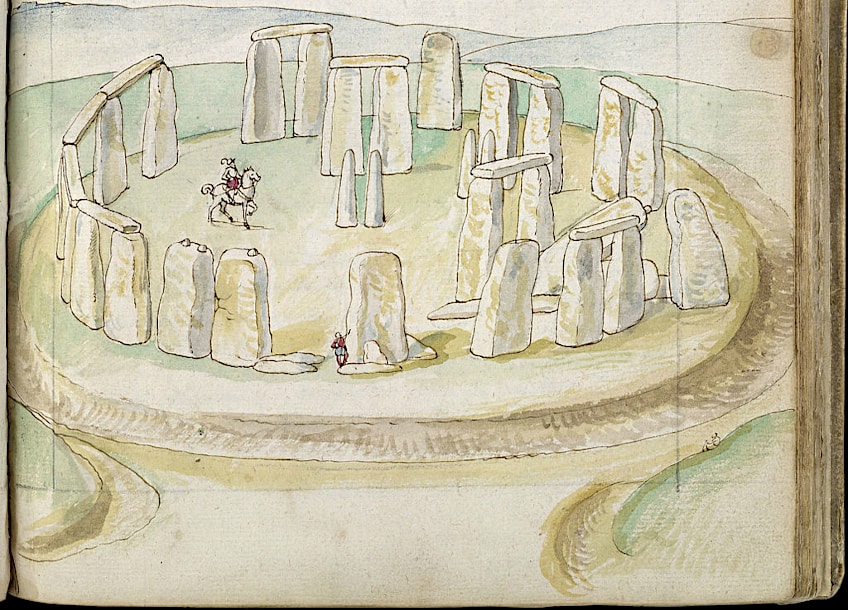
- In 1923, the remains of a man that had been decapitated was found at the site during excavation. Dating back to the 7th century CE, his body was unearthed from one of the pits within the stone circle. Found buried in a coffin made from wood, he was believed to have been around 30 years old at the time of his death. This discovery reveals that the site had been used long after it was originally constructed. It also suggests that Stonehenge may have been used for ceremonial or ritual purposes. The strange position in which the man’s body had been found (one arm beside him, and the other raised to his head) further supports this theory. Theories around why he was decapitated range from ritualistic purposes to criminal execution.
- Hippies and police got into a violent confrontation near Stonehenge in 1985. On the 1st of June, 1985, a large group of New Age travelers was on their way to a summer solstice festival that was being held at Stonehenge. A few miles before the site, police had set up a blockade and were not allowing anyone to pass. This eventually led to an extreme amount of violence inflicted upon the travelers by the police who attacked the crowds with dogs, shields, and truncheons. Many of were seriously hurt and vehicles suffered significant damage. This resulted in several lawsuits filed against the police, and many officers being charged with misconduct and assault. Known as the Battle of the Beanfield, it is regarded as a turning point in the manner in which police dealt with these kinds of visitors.
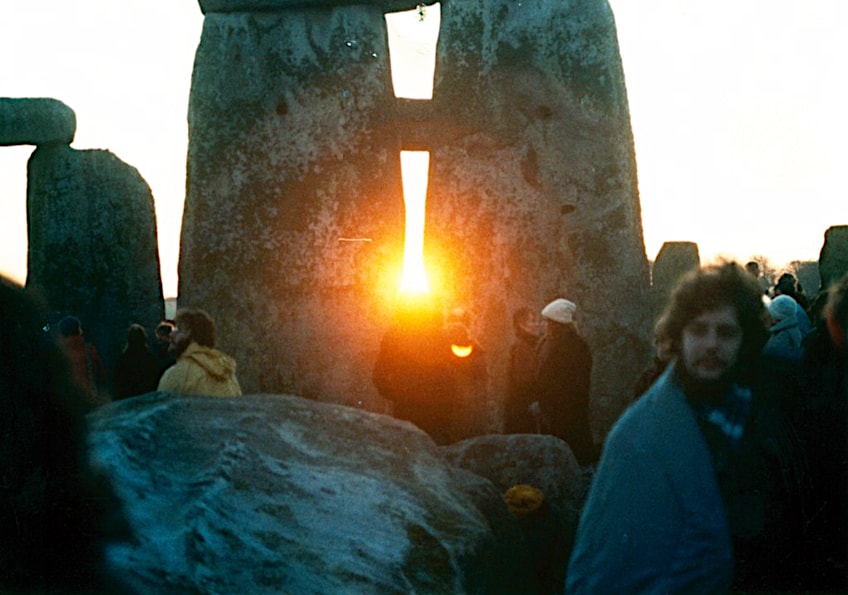
A Few Stonehenge Fun Facts
Now it is time to explore some of the Stonehenge fun facts and lesser-known aspects of this ancient site. Why is Stonehenge a mystery to historians, and will we ever know the entire story? Seeing that it was built so many years ago, and has been modified so many times, is there even a specific point where it was completed anyway?
- There are several stone circles in the area. This includes stone circles located in Durrington Walls and Avebury. The latter is around 20 miles from Stonehenge itself and is ranked as the largest in the world. Amazingly, the stones from both sites are believed to have come from the same place. Durrington Walls, which is believed to have been a ceremonial site, is located only two miles to the North of Stonehenge. All three sites fall under the banner of the Stonehenge Heritage Site.
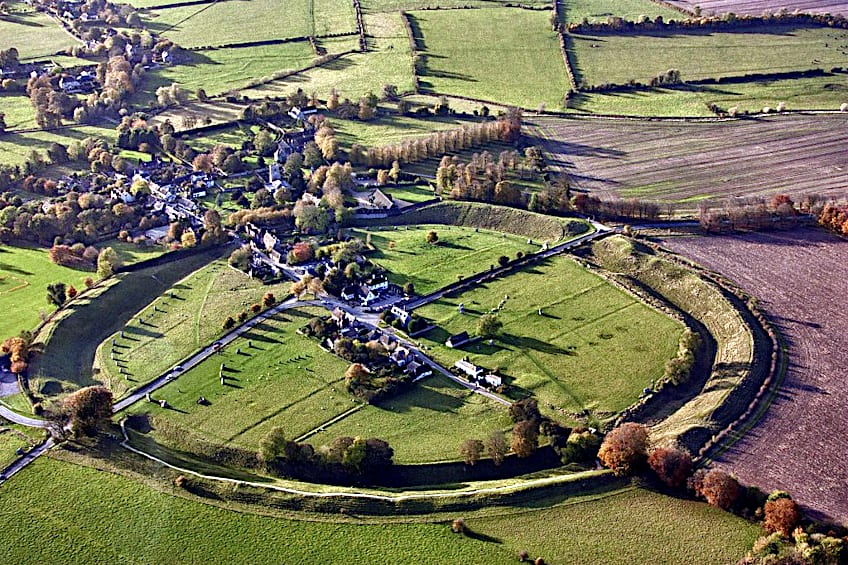
- A hundred years before the Battle of the Beanfield, visitors were also kept out. In 1885, there was a slew of angry letters posted to various publications regarding the regular vandalism afflicted upon the site and stones. Chunks of the stone were often cut off by local people who would then sell them as souvenirs to visitors. A group of people was sent out to assess the damage – included in the group rather ironically were several archeologists who had done their fair share of unauthorized picking and removing of the stones. A barbed wire fence was eventually installed in 1901 to deter further damage.
- Several features at the site are still unexcavated. As with many ancient monuments that have been discovered, there are many parts of the huge Stonehenge complex have yet to be uncovered. There are many structures at Stonehenge that are still buried underground which could reveal much about the use of the site. The Cursus, a large ditch, is one of the structures that have been discovered. It is believed to have originally been used for ceremonial purposes.
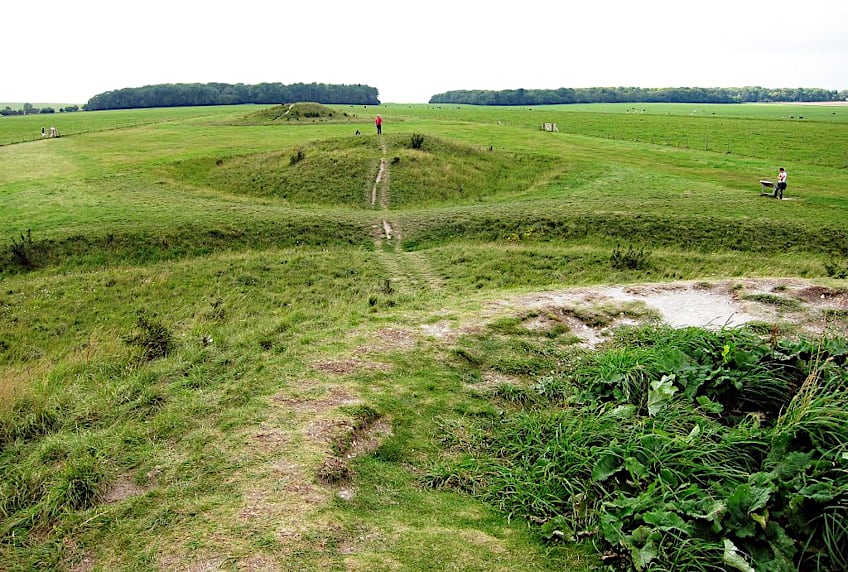
That concludes our look at the interesting facts about Stonehenge. From the historical Stonehenge facts to the Stonehenge fun facts, we hope you have learned something new about Stonehenge’s history. We are still learning more about this incredible site every day, so don’t be surprised if there is a new list of Stonehenge facts out there one day soon!
Frequently Asked Questions
What was Stonehenge’s Purpose?
We still do not know exactly why Stonehenge was built, but there are many theories that have been postulated. The most popular theory has long been that it was built to track certain celestial bodies to keep a calendar for agricultural purposes. A more recent theory is that the site was one of two monuments constructed to serve as venue for an annual commemoration of the dead (at Stonehenge) and celebration of the living (at a nearby site now named Woodhenge). Archeological evidence suggests that this event was attended by people who travelled there from across the British isles and Western Europe. Modern New Age travelers associate the site with pagan and druidic beliefs, such as the celebration of certain natural annual occurrences such as equinoxes. However, it is now generally accepted that the site was used for different purposes throughout the centuries.
Why Is Stonehenge Famous?
It is no real surprise that Stonehenge is a popular destination. Due to its ancient origins and connection to the stars, it carries with it a certain mystical appeal that speaks to many people. Because of its alignment with the stars, moon, and sun, it is a kind of mecca for New Age travelers whose beliefs are connected to events in nature. There are also many legends associated with the site, such as the myth about Merlin and a giant who was said to be responsible for moving the stones from Wales.
How Big Is Stonehenge?
When discussing the size of Stonehenge, it really depends on which part of the complex one is referring to. The famous circle of stones in the complex has a 100-meter diameter. The size of the site overall, however, spans a diameter of around 340 meters. The exact size of the site, however, has changed over time.
What Time Period Was Stonehenge Built In?
Although construction initially began in 3000 BCE, continued alterations and extensions occurred over a period of thousands of years. The first phase occurred during the Neolithic period and is noted as the period in which the bluestones arrived from Wales. In 2100 BCE, the next phase began with the transportation of the sarsen stones. In 1600 BCE, the final stage of construction saw the re-erection and placement of the stones.
Why Is Stonehenge a Mystery?
Although there are many theories surrounding the site, there is not much that can be ascertained for definite. We still do not fully understand why the structure was built, nor do we know for sure what it was potentially used for. Perhaps the astronomical alignments provide certain clues. They also reveal just how much more aware of the constellations and astronomical events the ancients were than we necessarily give them credit for.
Justin van Huyssteen is a freelance writer, novelist, and academic originally from Cape Town, South Africa. At present, he has a bachelor’s degree in English and literary theory and an honor’s degree in literary theory. He is currently working towards his master’s degree in literary theory with a focus on animal studies, critical theory, and semiotics within literature. As a novelist and freelancer, he often writes under the pen name L.C. Lupus.
Justin’s preferred literary movements include modern and postmodern literature with literary fiction and genre fiction like sci-fi, post-apocalyptic, and horror being of particular interest. His academia extends to his interest in prose and narratology. He enjoys analyzing a variety of mediums through a literary lens, such as graphic novels, film, and video games.
Justin is working for artincontext.org as an author and content writer since 2022. He is responsible for all blog posts about architecture, literature and poetry.
Learn more about Justin van Huyssteen and the Art in Context Team.
Cite this Article
Justin, van Huyssteen, “Facts About Stonehenge – The Archaeology of Salisbury Plain.” Art in Context. July 20, 2023. URL: https://artincontext.org/facts-about-stonehenge/
van Huyssteen, J. (2023, 20 July). Facts About Stonehenge – The Archaeology of Salisbury Plain. Art in Context. https://artincontext.org/facts-about-stonehenge/
van Huyssteen, Justin. “Facts About Stonehenge – The Archaeology of Salisbury Plain.” Art in Context, July 20, 2023. https://artincontext.org/facts-about-stonehenge/.


